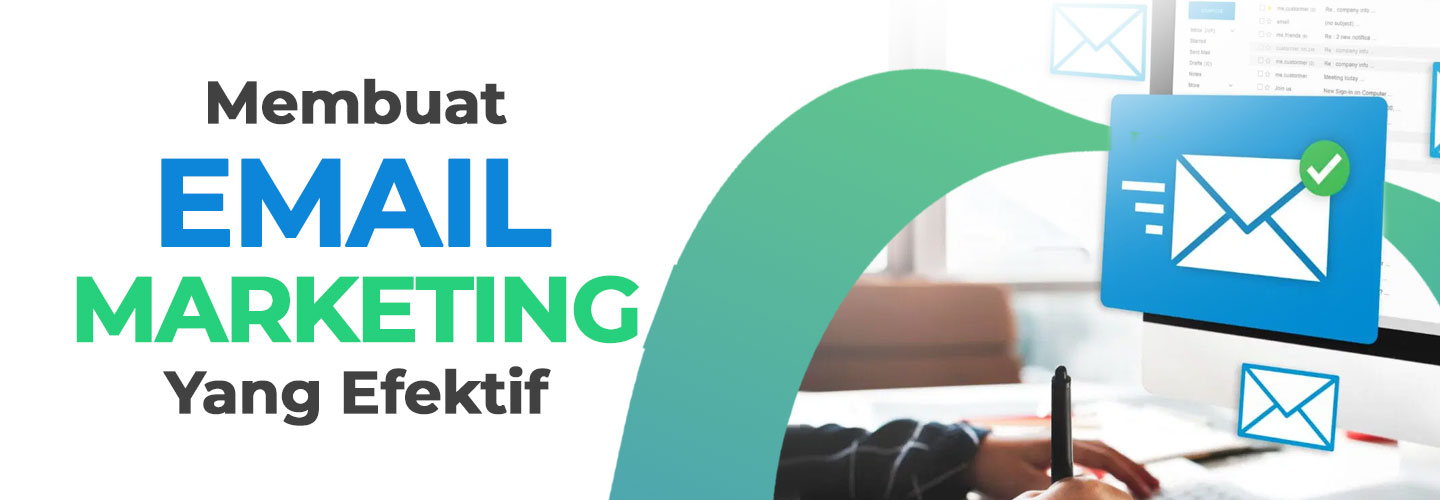Why is Email Marketing Important? Functions, Types and How to Make Them

Email marketing is a digital marketing effort that uses media in the form of electronic mail or email. Email marketing can be used to market various types of products or services sold in business.
There are no limits for any type of business, email marketing can be used to optimize your business marketing.
Based on a survey from Campaign Monitor, 64% of small businesses use email marketing to reach audiences or customers. Not only small scale businesses, many large scale businesses also use email marketing for specific purposes.
Apart from containing promotional information, there are several things we can do with email marketing to optimize business communications. Want to know other functions to make the marketing of the business you are running successful?
Read this article to the end and try creating your first marketing email afterward!
Email Marketing Function
Electronic mail or email is one of the oldest communication media in existence. It is not surprising that currently email marketing is still one of the priority choices for marketing communications in various types of business.
So what are the actual functions of email marketing? Here are some of them:
- Communication media with audiences or consumers.
- Increase leads and sales.
- Generate traffic that is sent directly to the company website.
- Sending campaigns according to schedule.
- Carry out massive marketing promotions with minimal costs.
With these various functions, email marketing continues to prove itself as an effective and efficient tool in reaching and building relationships with consumers.
Types of Email Marketing
With many functions, email marketing can be used as a marketing or communication medium to the target audience. Not limited to promotions, it turns out that the types of email marketing are quite diverse.
Here are several types of email marketing that can help you in business!
Survey Email
Usually, marketing emails containing surveys are used to gain insight from audiences or consumers. Apart from that, sending survey emails can also be a sign that a business values its audience or consumers.
In this position, the business respects consumers so it wants to know the opinions of the audience or consumers.
Promotional Emails
Apart from getting suggestions and impressions, a business also wants to provide the best offer to its audience. The type of marketing email that provides offers is a promotional email.
The aim is to provide information and increase brand awareness of a business.
Seasonal Email
Some brands will try to send emails periodically or seasonally. Depends on the season, time of day, or special event.
One example is a marketing email containing promotions for discounted goods in the summer. The purpose of sending marketing emails is to reach consumers or prospects to find out the latest sales information.
Email Marketing Creation Strategy
After understanding its function and types, have you imagined what kind of email marketing is suitable for your business? Before making an email marketing sending plan, know the strategy first.
The following are the steps that are important for you to know when you want to start promotions or communications to your audience using email marketing:
Determine the Campaign Goal
Before starting to write or design email marketing, first determine the promotional campaign you want. Do you want to increase sales, increase brand awareness, or get more consumers?
Having clear promotional campaign objectives will help you design marketing emails that are right on target.
Understanding Audience
After knowing the objectives of the promotional campaign, you need to understand the brand's audience. Knowing your audience profile will help you to create relevant promotional email campaign content.
Apart from that, the use of language can also be more adjusted.
Organizing an Email List
After that, start to build a quality email list. Use emails from existing and potential consumers of websites, events, or content.
In addition, make sure that the company or business you run has permission to send emails to the list that has been compiled.
Segmentation
Dividing your email list into several segments is quite helpful for you in designing email marketing. Divide segments based on demographics, location, interests, or recorded behavior.
Segmentation allows you to send emails that are relevant to your audience.
Email Personalization
By understanding your audience, creating an email list and segmenting it, you have the potential to create personalized email marketing. Personalized marketing emails will usually be better received by the audience because they are personal and reach directly.
However, before personalizing your email, make sure you know the purpose of sending it, OK!
Quality Content
After understanding the 5 things above, to add value so that the audience continues to subscribe to email marketing, make sure to create quality content. Not only do you create promotional content, you can also insert tips or information that is relevant to the promotion you are creating.
Email marketing is a digital marketing strategy that can be optimized based on business goals. Apart from that, to understand more deeply the marketing needs of your business, you can also learn many other things, one of which is soft skills such as leadership, management, and many more.
Need to sharpen your soft skills but have limited time? prasmul-eli provides short programs that help you gain interesting insights and sharpen your business skills!
Currently, short programs at prasmul-eli are held on average for 2-3 days using various face-to-face, online or hybrid methods. For those of you who have limited time but have the desire to continue to increase your knowledge, a short program at prasmul-eli could be a solution.
Want to know more about the short program at prasmul-eli? Click this link!
